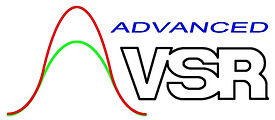top of page

It is hard to find a milling machine worth anything these days, that does not have a brushless motor in its spindle. Brushless motor technology has also revolutionized other industries, from electric cars and trains to hand power tools.
We are the only builder of vibratory stress relief equipment in North America that uses brushless motors, which we use exclusively. Why use anything else ?
Learn more on our Equipment Comparison page.


Professionals are available Monday through Friday from 7am to 5pm EST (US)
We're ready to answer any questions regarding the vibratory stress relief process & equipment!
Send us an email, or call (215) 366-3315
History of the VSR Process
Rudimentary forms of vibration were used in an attempt to stabilize metal parts almost two centuries ago. “Hammer relaxation”, the art of stress reduction through the application of repeated hammer blows to generate high amplitude, gradually decaying vibration, is but one example of early efforts at vibration induced metal stabilization. Other rudimentary methods of impact loading included the early foundry practice of dropping castings from considerable height into a sand pile, the “natural aging” or curing process of storing work pieces outdoors for 6 to 18 months to allow the metal to expand and contract with the daily changes in ambient temperature. Components positioned on the West side of a building, which would be kept cold in the morning, only to be hit by the afternoon sun, were found to cure faster, as were those adjacent to loading docks and railroad tracks. Peening, a process which, although well-accepted as a method to preclude stress corrosion, was also used, but found to be only marginally effective as a method of metal stress relief.
From 1920 to 1940 infrared photography and stereoscopic imaging experienced significant development, which, by WWII, resulted in highly improved reconnaissance. Foundries and heat-treating facilities, for example, could be easily identified from aerial photographs. Because these industrial processes were key to the Third Reich’s war machinery industries, these facilities became prime targets for Allied bombing.
Early in WWII the severe shortage of large castings forced German heavy industry to turn to fabrications, but, without heat treating facilities, they faced the problem of how large weldments could be stress relieved in preparation for precision machining. The Germans soon discovered accidently that large fabrications transported by truck or rail from the weld shop to the machine shop, as compared with those that were welded and machined in the same or adjacent facilities, displayed superior dimensional stability during machining. As the war progressed, the Germans made transport after fabrication, so called “travel-treatment” or “fahrtbehandlung” of large precision components standard procedure. Although manufacturing managers and engineers weren’t sure why this phenomenon occurred, some believed it was the result of work-piece flexure, and experimented with methods to generate flexure in a more predictable and cost effective manner, for example with applied vibration.
Four-thousand miles away, United States manufacturing of war machinery had greatly increased both the number and size of fabrication facilities, and precision requirements of the metal working industry. American engineers had also discovered stress relief through work-piece flexure, and began to actively pursue using applied vibration to excite workpieces. As related in the 1943 paper by McGoldrick and Saunders, published in the Journal of American Society of Naval Engineers, Vol. 55, No. 4, pgs. 589-609, [available from our Technical Library] the US Navy used vibratory stress relief to stabilize a variety of components, especially large jigs and fixtures used in shipyards.
After WWII, engineers from both sides of the war were frequently co-workers at firms in the United States, particularly in firms manufacturing paper mill machinery and components. Often these components were fabricated out of materials that responded poorly to thermal stress relief (e.g., 300 series stainless steel), or were bi-metallic. This shortcoming of the thermal process was the motivation for developing commercial equipment specifically designed to perform Vibratory Stress Relief.
One such firm was LODDING ENGINEERING, Auburn, MA (now KADENT WEB SYSTEMS). As the use of wider paper mill machinery became necessary, LODDING faced the daunting challenges of machining longer doctor blades and backs with increasingly tighter dimensional tolerances for these machines. Elementary vibration equipment was developed which produced results that clearly indicated the potential of vibratory stress relief.

On left, cover page of 1943 paper by McGoldrick & Saunders is we believe the first research published on the subject of vibratory stress relief. Authors describe use of vibration to stabilize chiefly tooling and castings that were then utilized by the Taylor Shipyards in Baltimore, Maryland during WWII.
Below, the first published VSR Treatment Chart, which appeared in an ASME published paper on vibratory stress relief in 1982. Workpiece was an aerospace tooling fixture, resembling a ladder.

bottom of page